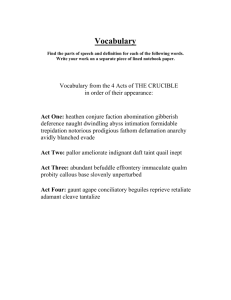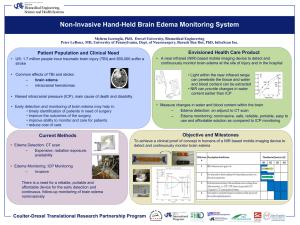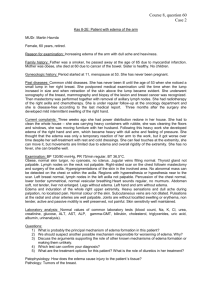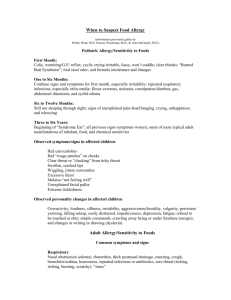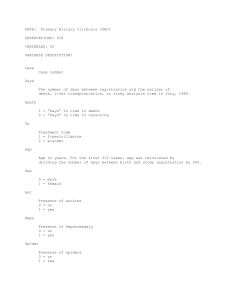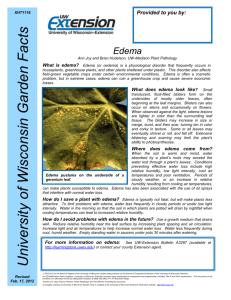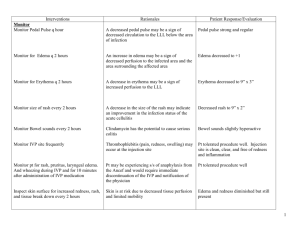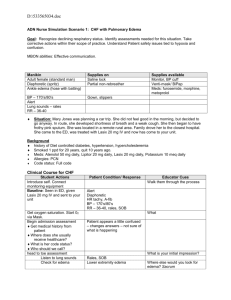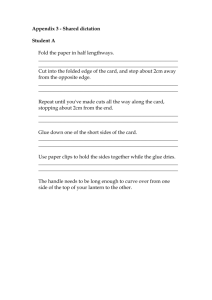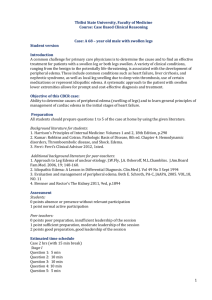radiographic contrast adverse event report * extravasation
advertisement
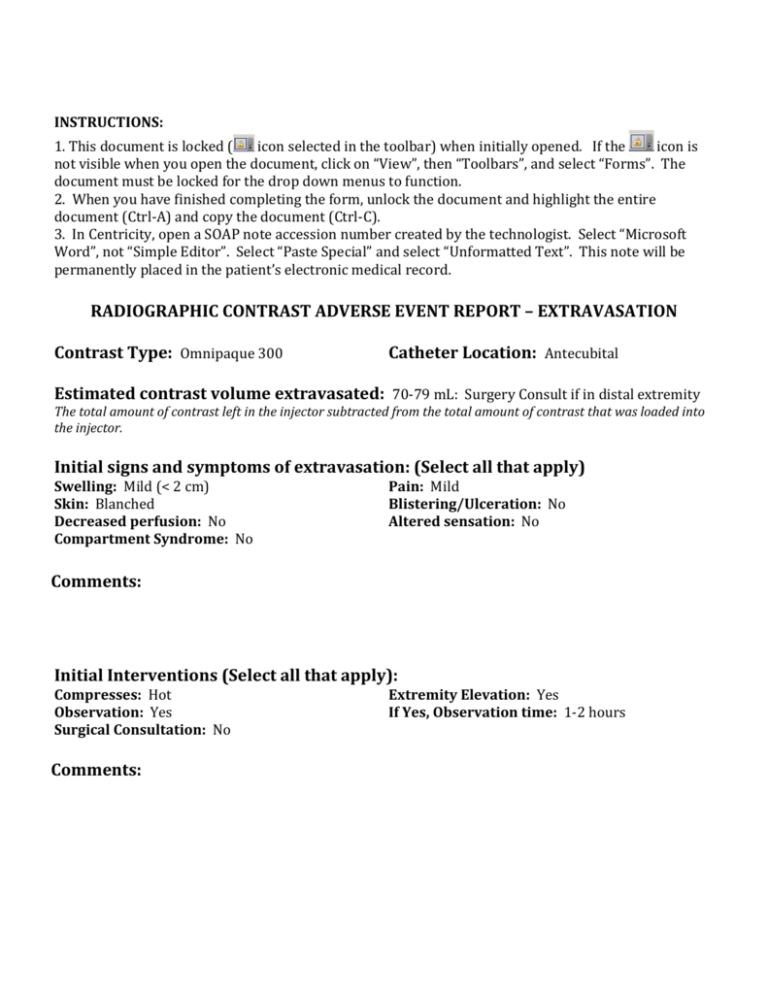
INSTRUCTIONS: 1. This document is locked ( icon selected in the toolbar) when initially opened. If the icon is not visible when you open the document, click on “View”, then “Toolbars”, and select “Forms”. The document must be locked for the drop down menus to function. 2. When you have finished completing the form, unlock the document and highlight the entire document (Ctrl-A) and copy the document (Ctrl-C). 3. In Centricity, open a SOAP note accession number created by the technologist. Select “Microsoft Word”, not “Simple Editor”. Select “Paste Special” and select “Unformatted Text”. This note will be permanently placed in the patient’s electronic medical record. RADIOGRAPHIC CONTRAST ADVERSE EVENT REPORT – EXTRAVASATION Contrast Type: Omnipaque 300 Catheter Location: Antecubital Estimated contrast volume extravasated: 70-79 mL: Surgery Consult if in distal extremity The total amount of contrast left in the injector subtracted from the total amount of contrast that was loaded into the injector. Initial signs and symptoms of extravasation: (Select all that apply) Swelling: Mild (< 2 cm) Skin: Blanched Decreased perfusion: No Compartment Syndrome: No Pain: Mild Blistering/Ulceration: No Altered sensation: No Comments: Initial Interventions (Select all that apply): Compresses: Hot Observation: Yes Surgical Consultation: No Comments: Extremity Elevation: Yes If Yes, Observation time: 1-2 hours Assessment of Stage of Extravasation Injury: Stage I. Stage I: Skin blanched, edema < 2cm, skin cool to touch, mild pain Stage II: Skin blanched, skin cool to touch, edema > 2cm, perfusion changes, signs of tissue damage Stage III: Skin translucent, edema > 3cm, skin cool to touch, perfusion changes, moderate pain, numbness Stage IV: Skin translucent/tight/discolored/bruised. Pitting edema, ulceration, pulse decreased or absent. Provider Notification:
